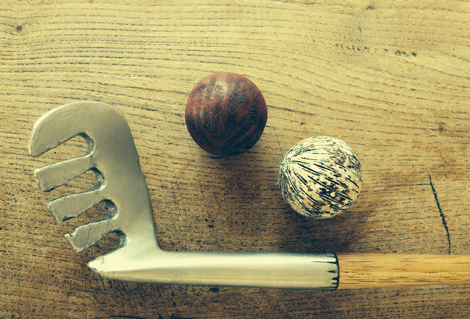
This 129 year old golf club was brought back to life using reverse engineering
As the world’s top golfers prepare to descend upon Gleneagles for the 2014 Ryder Cup, researchers from the University of Dundee are celebrating the game’s history with the use of the latest technology.
The University’s division of Mechanical and Electrical Engineering teamed up with St Andrews Golf Co. to investigate the process of making high quality, authentic examples of historically important irons, woods and putters.
The team worked on clubs including a ‘President’ Water Iron from around 1885 made by James Anderson of Anstruther – designed for golfers to play their ball from either a burn or casual water, almost ‘scooping’ the ball out the water.

Although it’s proudly awl mounted, it’s hoped that clubs like these can help preserve the history of the game by being used on course
The club was scanned on a Next Engine 3D Scanner in the University’s Division of Mechanical and Electrical Engineering, with the resulting CAD model then sent metal sintering experts EOS.
The club head was printed in cobalt chrome at EOS’ German facility over the course of 29 hours.
When the part returned to Scotland for finishing it became apparent that the clubhead was so strong it could not be drilled using traditional methods so was sent to the University of Strathclyde’s Advanced Forming Research Centre (AFRC), where engineers drilled out the hosel using high carbide drills.
The part was then returned to St. Andrews Golf Co., who then fitted the clubhead with a hickory shaft and grip, polished the head and applied a traditional clubmaker’s stamp mark in keeping with the period of time that the club was dated from.
It is hoped the club, and others that may follow, will be produced for use as teaching aids at the museum and in areas of the world where there is little historical understanding of the game.
“We are the last true clubmakers, the custodians of the craft, so this was an important project for us to have taken part in, allowing us to ensure that the model was historically accurate,” said St Andrews Golf Co’s Grant Payne, also a product design graduate of Dundee University.
“Frankly, without the assistance and expertise of the academics at the University this project would have impossible for us to undertake alone.
“Studying the evolution of golf clubs is one of the best ways of learning about the game’s history. The two clubs we looked at are interesting because they date from a time that was known as golf’s ‘era of innovation’, when the sport as we know it today really came into being.”






